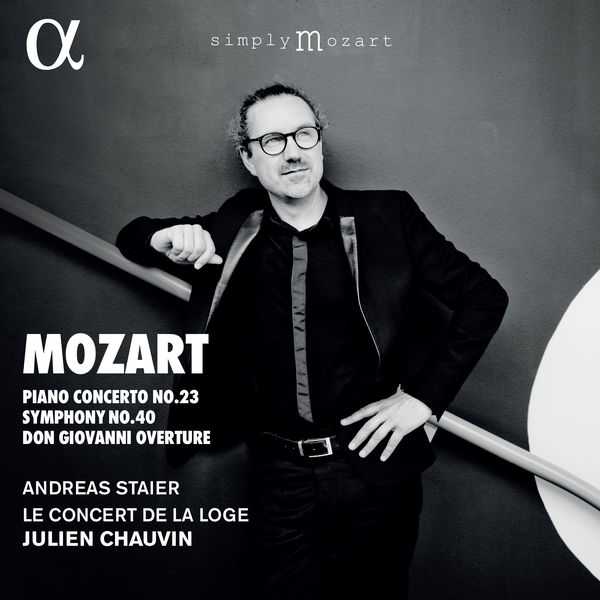

Composer: Wolfgang Amadeus Mozart
Performer: Andreas Staier
Orchestra: Le Concert de la Loge
Conductor: Julien Chauvin
Format: FLAC (tracks)
Label: Alpha
Catalogue: ALPHA875
Release: 2022
Size: 0.98 GB
Recovery: +3%
Scan: yes
Don Giovanni, K527
01. Overture
Piano Concerto No. 23 in A major, K488
02. I. Allegro
03. II. Adagio
04. III. Allegro assai
Symphony No. 40 in G minor, K550
05. I. Molto allegro
06. II. Andante
07. III. Menuetto
08. IV. Allegro assai
Julien Chauvin meets up with one of the great harpsichordists and fortepianists of our time, Andreas Staier, who is a leading interpreter of the Mozart concertos. He presents us with his vision of the Piano Concerto no.23 and its famous Adagio, ‘one of the most heart-rending slow movements ever written by Mozart . . . Performers often tend to take it too slowly, certainly thinking that this will accentuate the tragic side, but Julien Chauvin and I spontaneously agreed on a slightly faster tempo, which respects the basic pulse of this movement in siciliana rhythm. When you start with the right tempo, it’s amazing how the whole discourse comes together perfectly, in a very logical and simple manner’, says Staier, who plays a magnificent instrument by Christoph Kern after a 1790 fortepiano by Anton Walter, the great maker of Mozart’s time. Also on the programme is the Symphony no.40, in which, says Julien Chauvin, ‘Mozart explores types of writing that he pushes to their most extreme limits. This is the case in the finale, where we find a succession of dissonant disjunct intervals at the opening of the development which, on closer inspection, present us with the full chromatic scale (except for G natural, the symphony’s tonic). And so the twelve-note series was born!’